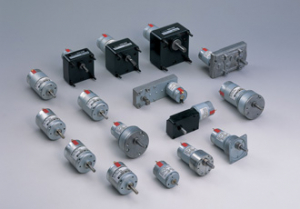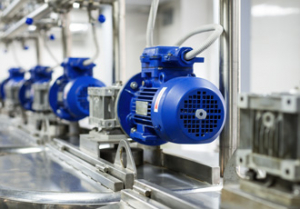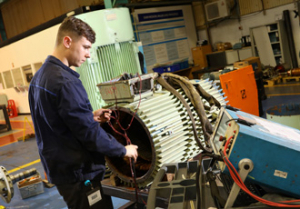Pole and slot numbers often not considered carefully enough

The design of brushless PM-AC and PMDC motors – in particular the selection of stator slot and rotor pole combinations – has often appeared to result from a copycat culture, rather than being based on sound design principles, according to Motorsolver president and IEEE life fellow Jim Hendershot.
When designing a PM-AC synchronous motor for hybrid or electric vehicle traction, the choice of rotor pole and stator slot combinations can result in many differing performance and manufacturing characteristics. Designers are able to base their slot-pole choice on a balance of suitability for low-cost automatic winding, low noise, low cogging, short end turn height and high efficiency in accordance with the requirements of each motor application. According to internationally-renowned motor design expert Jim Hendershot, however, too often manufacturers do not consider all the variations open to them, opting for the combination that happens to be fashionable at the time.
“Many permanent magnet brushless machine designs over the years have been based upon copying previous motors without much knowledge as to why the pole and slot numbers were selected,” he says. “Early on, four pole four slot designs were commonplace and everyone copied these designs. These were eventually replaced in the 80s by six slot-four pole motors for low-cost manufacturing and short end turn heights. More recently, 12 slot-10 pole designs have gained popularity for quiet operation, low-cost manufacturing and high torque density. When Toyota brought out its first traction motor for the Prius in 2008, it was designed with a special internal magnet rotor with eight poles and 48 slots. Toyota was very successful and has sold hundreds of thousands of cars with that motor type. Since that time many other manufacturers of hybrid traction machines have used the exact same pole-slot combination. Whatever is popular in the motor industry, people copy it based on the types of motors that are selling well.”
Hendershot sees one reason for this copycat culture as a reticence to make additional investments in R&D. “Toyota has spent millions of dollars in research, designing and building samples and testing all the configurations of motors. When new or smaller companies enter the business, they don’t have the money Toyota does to spend on research to see if that is the best choice or if there is a better one. It’s all about money and that makes it tough to change or improve!” he says.
Another potential reason is the dearth of young engineers, choosing to specialize in motor design. “There are very few motor design classes running at universities in the US nowadays and even where classes do run, participants are typically international students who would have difficulty gaining a green card to work in the US after graduation. The situation is not as serious in Europe – there are good courses at universities in the UK, Netherlands, Czech Republic and Germany – but still not enough knowledge, specifically practical knowledge, is being passed on in academia,” Hendershot says.
To make up the shortfall, Hendershot regularly holds motor design classes around the world –and they are well subscribed. “The participants typically fall into motor design as a career and their company wants to support them by increasing their knowledge. It works well because the classes are tailored to the company’s particular type of motor. The classes are workshop based, offering hands-on experience as the participants design electric machines while in class using provided software,” he says.
Selection criteria explained
In May Hendershot will be bringing his expertise to Germany at CWIEME Berlin (Coil Winding, Insulation and Electrical Manufacturing Exhibition), the world’s leading trade fair for the electric motor manufacturing industry. He will be holding a seminar, entitled ‘Pole and slot number selection procedure for PM synchronous motors’, on Wednesday 11th May at 14:35-15:15. During the seminar, which is free for all CWIEME Berlin visitors to attend, Hendershot will provide practical guidelines to help motor designers select the right slot-pole combination for their application.
“I have over 40 years’ experience in this industry so I hope the participants at CWIEME Berlin – whether visitors or exhibitors – will make the most of this opportunity to ask questions, have a few discussions with me and take away some new knowledge to apply in their role,” he concludes.












Write a comment
No comments